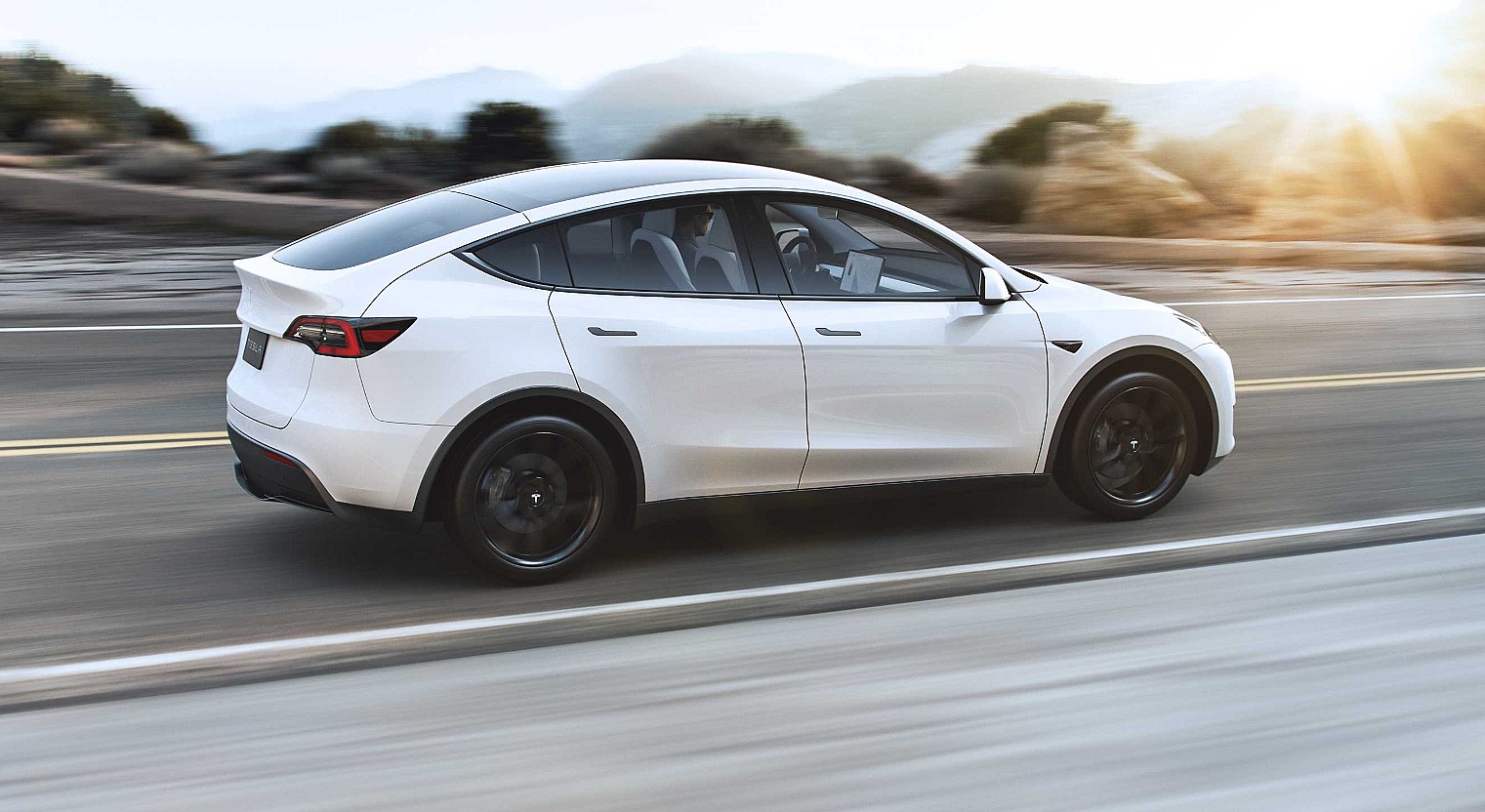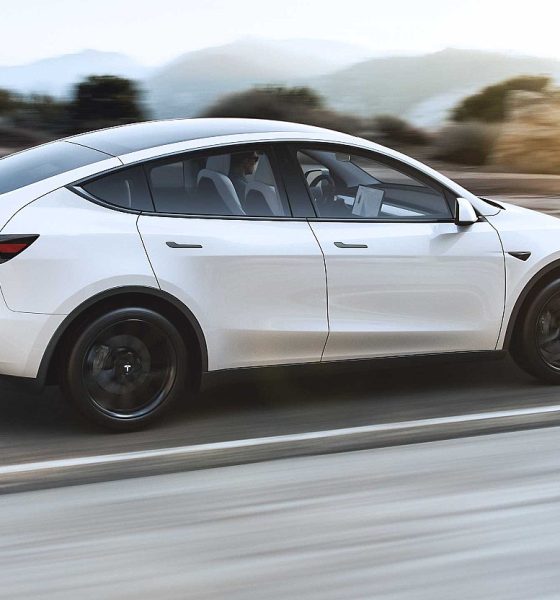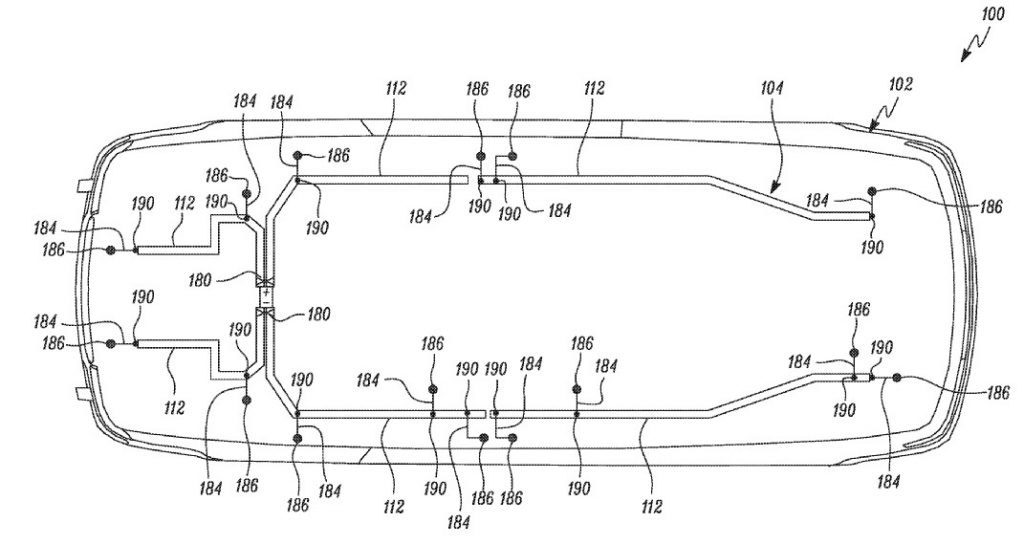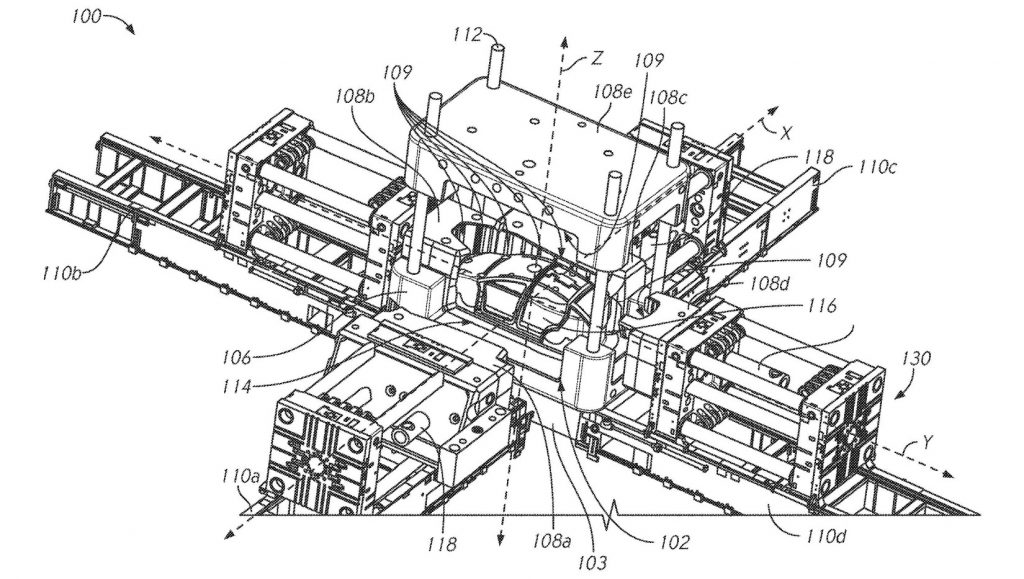

News
The Model Y is an understated Trojan Horse for Tesla’s manufacturing ambitions
The launch of the Tesla Model Y is, in several ways, an understated and undramatic event. There were no surprise vehicles at the end of the crossover’s presentation, nor were there any announcements about the number of pre-orders the electric car maker received for the seven-seater. Tesla has been pretty quiet about the Model Y since, too, as updates on the crossover have mostly come through insider reports and patent applications from the company.
It is through these patent applications that one could see the potential of the Model Y to revolutionize Tesla’s overall manufacturing operations. A look at two patents that are tailor-fit for the Model Y, for example, suggests that Tesla will be adopting a far more innovative production process for the vehicle compared to its past electric cars, including the mass-market Model 3 sedan, a vehicle that is essentially carrying Tesla into its current transition into a mainstream car manufacturer. With this in mind, the Model Y could even be described as a Trojan Horse of sorts, carrying the electric car maker’s innovations (mostly) under the radar.

One of these innovations is a rigid wiring system that will allow Tesla to drastically reduce the wiring of the Model Y compared to its older stablemates. Using the company’s design outlined in its patent, Tesla is expected to use only around 100 meters of wiring for the Model Y, far less than the 1.5 km of cabling used in the Model 3. Such a design also aids the company’s automation initiatives, as the rigid wiring harness will be easier to install by the company’s robots.
Another, even more notable innovation lies in a patent for a “Multi-Directional Unibody Casting Machine for a Vehicle Frame and Associated Methods” that seems to have been teased by company executives in the past. Elon Musk has mentioned that the company’s new casting machine will have the capability to cast pretty much the entire body of a vehicle in one piece, essentially eliminating the need for numerous welds across the body. “When we get the big casting machine, it’ll go from 70 parts to 1 with a significant reduction in capital expenditure on all the robots to put those parts together,” Musk said.

These new innovations outlined in Tesla’s patent applications hint at the Model Y being the company’s first vehicle to adopt such designs in its wiring and casting. This is great news for the company’s upcoming vehicles like the Tesla Pickup Truck, the Semi, and the next-generation Roadster, all of which will likely benefit from these optimizations. More importantly, this is also great news for the Model 3.
Tesla’s struggles with the Model 3 ramp in the United States have been well-documented, as the company had to abandon a widely-automated approach to producing the vehicle to one that was more balanced between humans and machines. With the Model Y, Tesla could essentially start anew and experiment with more ambitious and manufacturing models once more. Fortunately for the Model 3, the vehicle shares about 75% of its parts with the Model Y, which means that production improvements that work for the crossover would likely be applicable for the midsize sedan as well.
The Tesla Model Y’s manufacturing revolution might begin sooner than expected, especially with the start of production at the company’s Gigafactory 3 site in Shanghai. Gigafactory 3 is designed to produce affordable versions of the Model 3 and Model Y for the Chinese market, suggesting that the facility will be optimized for speed and volume. It would then be interesting to see how Tesla produces the Model 3 (and later, the Model Y) on the site, as it could provide a glimpse at how much the company has improved based on lessons learned from the electric sedan’s ramp in the United States.
H/T Long Term Tips.

News
Tesla FSD fleet is nearing 7 billion total miles, including 2.5 billion city miles
As can be seen on Tesla’s official FSD webpage, vehicles equipped with the system have now navigated over 6.99 billion miles.

Tesla’s Full Self-Driving (Supervised) fleet is closing in on almost 7 billion total miles driven, as per data posted by the company on its official FSD webpage.
These figures hint at the massive scale of data fueling Tesla’s rapid FSD improvements, which have been quite notable as of late.
FSD mileage milestones
As can be seen on Tesla’s official FSD webpage, vehicles equipped with the system have now navigated over 6.99 billion miles. Tesla owner and avid FSD tester Whole Mars Catalog also shared a screenshot indicating that from the nearly 7 billion miles traveled by the FSD fleet, more than 2.5 billion miles were driven inside cities.
City miles are particularly valuable for complex urban scenarios like unprotected turns, pedestrian interactions, and traffic lights. This is also the difference-maker for FSD, as only complex solutions, such as Waymo’s self-driving taxis, operate similarly on inner-city streets. And even then, incidents such as the San Francisco blackouts have proven challenging for sensor-rich vehicles like Waymos.
Tesla’s data edge
Tesla has a number of advantages in the autonomous vehicle sector, one of which is the size of its fleet and the number of vehicles training FSD on real-world roads. Tesla’s nearly 7 billion FSD miles then allow the company to roll out updates that make its vehicles behave like they are being driven by experienced drivers, even if they are operating on their own.
So notable are Tesla’s improvements to FSD that NVIDIA Director of Robotics Jim Fan, after experiencing FSD v14, noted that the system is the first AI that passes what he described as a “Physical Turing Test.”
“Despite knowing exactly how robot learning works, I still find it magical watching the steering wheel turn by itself. First it feels surreal, next it becomes routine. Then, like the smartphone, taking it away actively hurts. This is how humanity gets rewired and glued to god-like technologies,” Fan wrote in a post on X.
News
Tesla starts showing how FSD will change lives in Europe
Local officials tested the system on narrow country roads and were impressed by FSD’s smooth, human-like driving, with some calling the service a game-changer for everyday life in areas that are far from urban centers.

Tesla has launched Europe’s first public shuttle service using Full Self-Driving (Supervised) in the rural Eifelkreis Bitburg-Prüm region of Germany, demonstrating how the technology can restore independence and mobility for people who struggle with limited transport options.
Local officials tested the system on narrow country roads and were impressed by FSD’s smooth, human-like driving, with some calling the service a game-changer for everyday life in areas that are far from urban centers.
Officials see real impact on rural residents
Arzfeld Mayor Johannes Kuhl and District Administrator Andreas Kruppert personally tested the Tesla shuttle service. This allowed them to see just how well FSD navigated winding lanes and rural roads confidently. Kruppert said, “Autonomous driving sounds like science fiction to many, but we simply see here that it works totally well in rural regions too.” Kuhl, for his part, also noted that FSD “feels like a very experienced driver.”
The pilot complements the area’s “Citizen Bus” program, which provides on-demand rides for elderly residents who can no longer drive themselves. Tesla Europe shared a video of a demonstration of the service, highlighting how FSD gives people their freedom back, even in places where public transport is not as prevalent.
What the Ministry for Economic Affairs and Transport says
Rhineland-Palatinate’s Minister Daniela Schmitt supported the project, praising the collaboration that made this “first of its kind in Europe” possible. As per the ministry, the rural rollout for the service shows FSD’s potential beyond major cities, and it delivers tangible benefits like grocery runs, doctor visits, and social connections for isolated residents.
“Reliable and flexible mobility is especially vital in rural areas. With the launch of a shuttle service using self-driving vehicles (FSD supervised) by Tesla in the Eifelkreis Bitburg-Prüm, an innovative pilot project is now getting underway that complements local community bus services. It is the first project of its kind in Europe.
“The result is a real gain for rural mobility: greater accessibility, more flexibility and tangible benefits for everyday life. A strong signal for innovation, cooperation and future-oriented mobility beyond urban centers,” the ministry wrote in a LinkedIn post.
News
Tesla China quietly posts Robotaxi-related job listing
Tesla China is currently seeking a Low Voltage Electrical Engineer to work on circuit board design for the company’s autonomous vehicles.

Tesla has posted a new job listing in Shanghai explicitly tied to its Robotaxi program, fueling speculation that the company is preparing to launch its dedicated autonomous ride-hailing service in China.
As noted in the listing, Tesla China is currently seeking a Low Voltage Electrical Engineer to work on circuit board design for the company’s autonomous vehicles.
Robotaxi-specific role
The listing, which was shared on social media platform X by industry watcher @tslaming, suggested that Tesla China is looking to fill the role urgently. The job listing itself specifically mentions that the person hired for the role will be working on the Low Voltage Hardware team, which would design the circuit boards that would serve as the nervous system of the Robotaxi.
Key tasks for the role, as indicated in the job listing, include collaboration with PCB layout, firmware, mechanical, program management, and validation teams, among other responsibilities. The role is based in Shanghai.
China Robotaxi launch
China represents a massive potential market for robotaxis, with its dense urban centers and supportive policies in select cities. Tesla has limited permission to roll out FSD in the country, though despite this, its vehicles have been hailed as among the best in the market when it comes to autonomous features. So far, at least, it appears that China supports Tesla’s FSD and Robotaxi rollout.
This was hinted at in November, when Tesla brought the Cybercab to the 8th China International Import Expo (CIIE) in Shanghai, marking the first time that the autonomous two-seater was brought to the Asia-Pacific region. The vehicle, despite not having a release date in China, received a significant amount of interest among the event’s attendees.








